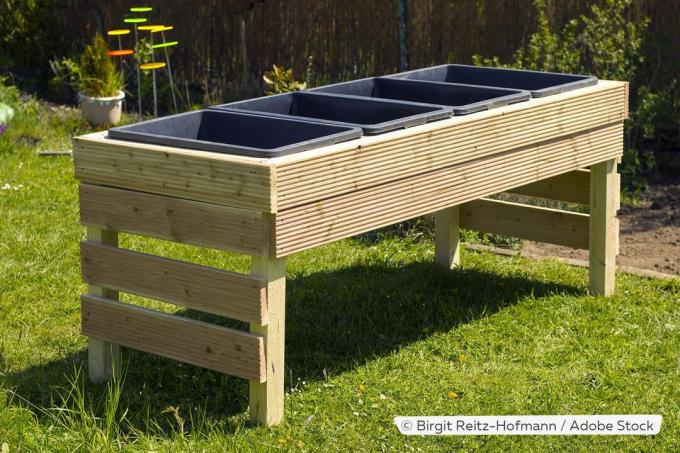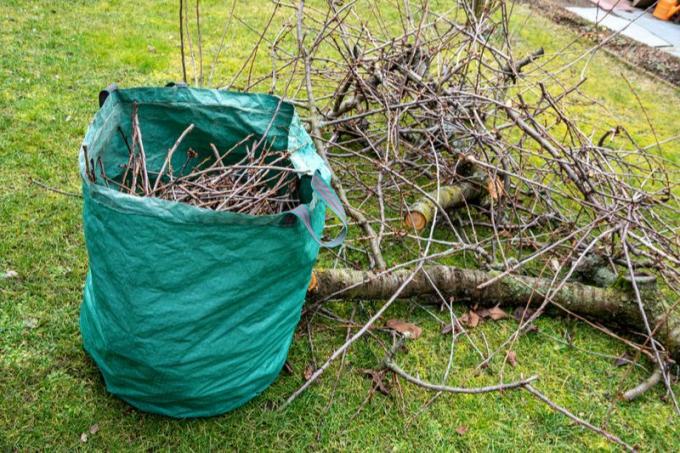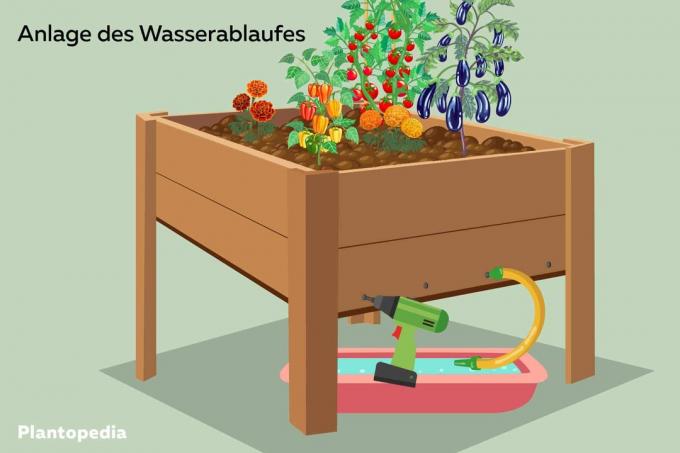Raised beds are very popular. They are also suitable on the balcony or terrace, but then they need good drainage to prevent waterlogging. This article explains how this can be easily laid.
In a nutshell
- Drainage ensures dry substrate
- Ventilation is ensured
- in raised beds without a bottom, coarse plant parts are sufficient as drainage
- in closed beds, drainage is more complex
Table of contents
- Drainage in the raised bed - benefits
- materials that make sense
- Installation of water drainage
- Drainage in the small raised bed
- frequently asked Questions
Drainage in the raised bed - benefits
To prevent waterlogging from forming in the raised bed, rainwater or irrigation water must be able to drain away. Depending on their capacity, raised beds can absorb a great deal of water, so there is no immediate need for drainage accessible, but at the latest when puddles form in the bed after a few days of rain, it becomes clear how important a good one is drainage is. This applies in particular to raised beds that are closed at the bottom and mostly dense, such as those used on balconies or terraces. The advantage is that the beds do not leak, and therefore neither does the floor of the balcony or terrace soiling or damage from persistent wetness can lead to problems in the raised bed self.

materials that make sense
Be careful when fill the raised bed to the following important details.
- Natural materials are suitable for a drainage layer in an open raised bed
- such as branches and twigs from fruit trees
- form a loose layer in the lower part of the bed
- in closed beds only effective as part of the drainage
- excess water must be able to drain off
- therefore drainage hoses, pipes and water collection containers are necessary

A notice: Since the plant material in open raised beds eventually collapses, the beds have to be restocked after a few years.
Installation of water drainage
If no water is to stand in the raised bed, holes must be created for the drain. To do this, holes are simply drilled a few centimeters above the floor in the side walls. Pipes or hoses can be inserted through these holes. A container for collecting the water must be attached below the ground level of the raised bed. However, this process varies depending on the shape and location of the raised bed.
Garden and terrace
The following variants are possible
- Easier to attach the collection container under the raised bed
- Hoses can be routed over the edge of the patio into a bed or lawn
- Set up the rain barrel next to the terrace and connect it to the raised bed with hoses
balcony
The following variants are possible
- Collector more difficult to install
- Raised bed to higher level place
- Make holes in the side walls higher (disadvantage: there is a lot of water in the raised bed)

Drainage in the small raised bed
Smaller, still moveable raised beds can be placed in a watertight tub that is slightly larger than the base of the raised bed itself. The bottom and lower sides of the raised bed are made with holes that should not be so large that soil is washed out. Excess water can drain into the tub, similar to houseplants where the excess water sits in the planter. It is then also easier to see when the bed should be watered again.
frequently asked Questions
Waterlogging is only dangerous for the raised bed itself if it is made of wood or other moisture-sensitive material. The shelf life is then considerably reduced. Waterlogging also has disadvantages for the substrate in the raised bed. The earth becomes dense, the aeration of the soil is no longer given. Many plants can be damaged in the long term as a result.
Raised garden beds, which are best planted in regular, well-drained soil, do not require drainage as excess water simply soaks into the soil. Be careful with compacted clay soils. Under certain circumstances, the natural drainage no longer works as well.
Although water can drain well between stones, a layer of stones or gravel in the raised bed is poorly suited as drainage. Earth is flushed between the stones and closes the gaps. In addition, the stones also get up into the substrate and then interfere with working and planting the bed. In the case of a new plant, the stones must first be sieved out of the ground again.



